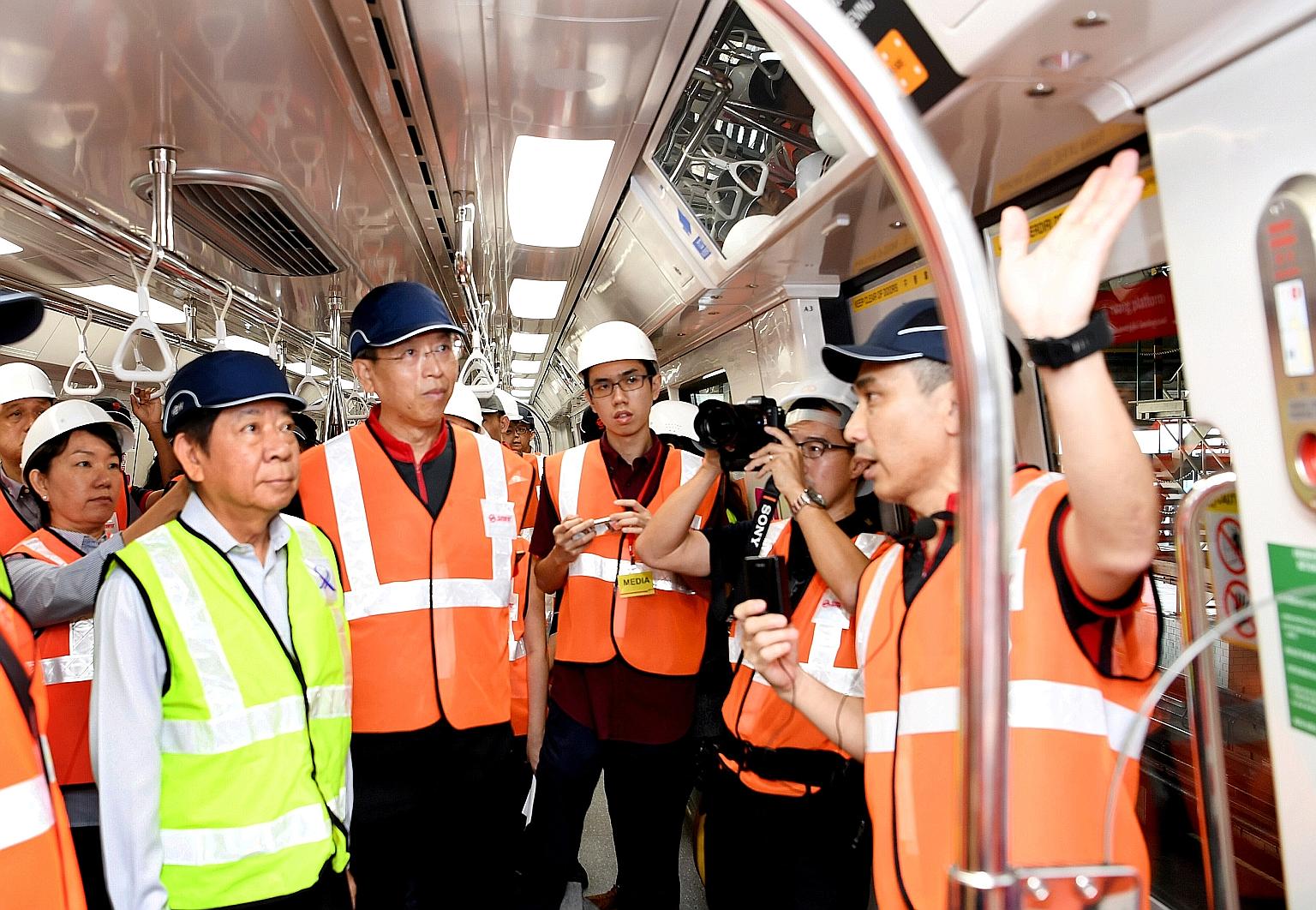SMRT adding 12 trains to two most heavily used lines
Sporting new features, six will be deployed next month on North-South, East-West lines
Sign up now: Get ST's newsletters delivered to your inbox

Transport Minister Khaw Boon Wan (far left) and new SMRT chief executive officer Neo Kian Hong (beside him) at the pre-launch of the new trains at Bishan depot yesterday.
ST PHOTO: KHALID BABA
Follow topic:
SMRT Corp's new chief executive Neo Kian Hong said six new MRT trains will be put into service next month, with another six to be added by early next year.
In his maiden press event yesterday during a visit to Bishan depot with Transport Minister Khaw Boon Wan, Mr Neo said the 12 new trains "will add capacity and meet commuter demand on the North-South, East-West lines" - the oldest, longest and most heavily used rail lines here. The two lines now have a fleet of 186 trains.
The trains come with new features such as enhanced air-condition settings to cope with peak passenger load, tip-up seats which will free up more space during peak hours and several reliability enhancements.
For instance, an automatic alert will go off when a train's current collector device - the part which makes contact with and draws power from the third rail - is dislodged.
This will prevent major breakdowns such as the twin incidents in December 2011 which led to passengers being stranded in tunnels.
Mr Neo said he had "moved to near Shunfu just to make sure I can take the train to work". He said he had sold his car "earlier on, but I didn't want to buy a new car because it is more useful for me to take the MRT to understand the issues" of commuters.
The new chief, who took over from Mr Desmond Kuek on Aug 1, said he has set three mission objectives - to deliver reliability, sustainability and continuous improvement. "Reliability is a basic requirement, so we have to do that," he said. "But reliability alone is not enough, you have to sustain it at a level."
He added that "continuous improvement is a culture we want". "This is a trains company, and we will deliver," he said.
Asked when the new signalling system will deliver its shorter 100-second service interval - down from 120 seconds now - Mr Neo said: "Because it is a big system, whatever new project, we do it very systematically, very deliberately.
"There is a project ongoing to look at the headway between the vehicles. Headway is the one that allows us to shorten waiting time. But for now, it is an ongoing project, and at an appropriate time, we will let you know."
Commuter Lionel Tan is among those looking forward to this. The 28-year-old accountant, who usually takes the East-West Line, said: "The trains seldom break down now, and that is a good thing.
"But they are still very crowded, especially during peak hours. There is no difference in that area. We still have to wait for a few trains to pass before we can board one." He hopes the shorter headways can be put into effect as soon as possible.
Associate Professor Park Byung Joon of the Singapore University of Social Sciences' School of Business said: "If headway remains the same, the line's capacity remains the same." But he noted that having more trains can increase the number of reserve trains, which allows an operator more buffer should trains break down.
National University of Singapore transport researcher Lee Der-Horng concurred, but added that a capacity increase could arise from the trains themselves being able to carry more people, "such as by providing more standing space" - which the new trains can do.
The new trains - which will account for 6 per cent of the entire fleet of North-South and East-West lines - can carry 100, or 6 per cent, more passengers if their tip-up seats are folded.

